Introduction
Have you ever wanted to experience the thrill of ride a mountain bike? Riding through rugged terrains, conquering challenging trails, and feeling the rush of adrenaline as you navigate tricky obstacles? If you’re ready to embark on this exciting journey, this article will guide you through the process of learning how to ride a mountain bike. From choosing the right bike to mastering advanced techniques, we’ll cover everything you need to know. So, let’s get started!
1. Choosing the Right Mountain Bike
When it comes to mountain biking, having the right bike is essential. There are various types of mountain bikes available, each designed for different terrains and riding styles. Before making a purchase, consider factors such as bike frame, suspension, wheel size, and gears. Finding a bike that suits your skill level and budget is also important Ride a Mountain Bike.
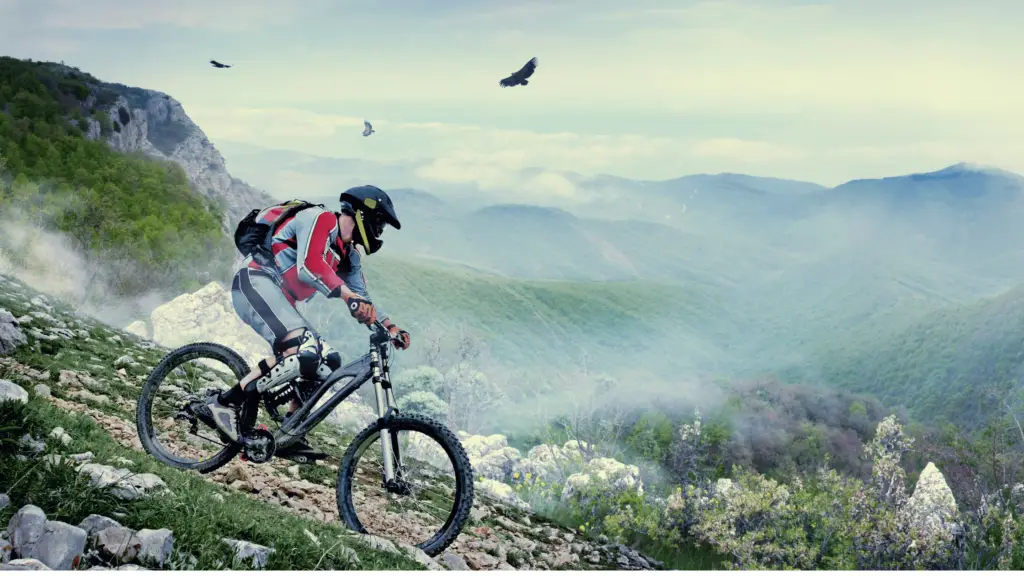
2. Essential Gear and Safety Tips
Before hitting the trails, it’s crucial to prioritize safety. Wearing appropriate gear is a must. Invest in a well-fitted helmet, gloves, knee and elbow pads, and sturdy shoes. Additionally, ensure your bike is equipped with reflectors and lights for visibility. Familiarize yourself with basic safety guidelines, such as signaling, maintaining a safe distance, and following trail rules.
3. Bike Setup and Positioning
Proper bike setup and positioning play a significant role in comfort and control. Adjust the saddle height, handlebar position, and suspension settings to fit your body and riding style. Maintain a relaxed posture, keeping your elbows slightly bent and eyes focused on the trail ahead. Balancing your weight between the front and rear wheels will enhance stability and maneuverability.
4. Mastering the Basic Techniques
To become a skilled mountain biker, you need to master the fundamental techniques. Start with learning how to mount and dismount the bike smoothly. Practice balancing, pedaling, and shifting gears to maintain control and efficiency. Develop proper braking techniques and become adept at controlling your speed. These foundational skills will form the basis for your mountain biking journey.
5. Riding Uphill
Climbing uphill can be challenging, but with the right technique, it becomes more manageable. Shift to lower gears, maintaining a steady pedaling rhythm to conserve energy. Keep your weight forward to maintain traction on the front wheel. Choose the best line and use your body position to maximize grip. With practice, you’ll conquer even the steepest inclines (Ride a Mountain Bike).
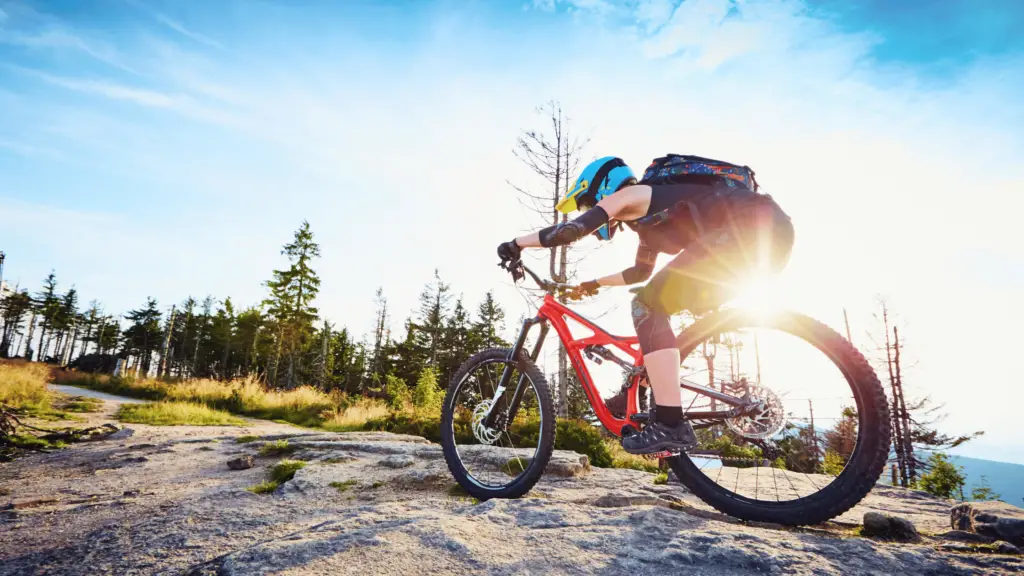
6. Descending Safely
Descending requires a combination of skill and confidence. Before tackling steep descents, ensure you have a solid understanding of braking techniques. Use both front and rear brakes, applying them gradually to maintain control. Shift your weight backward to improve stability. Look ahead, choosing the smoothest line and adjusting your body position to absorb bumps and maintain balance.
7. Navigating Tight Turns
Tight turns require precise handling and control. Approach the turn with controlled speed, and as you enter, lean your body and bike into the corner. Keep your eyes focused on the exit point and use your body weight to steer the bike smoothly through the turn. Remember to release the brakes gradually as you exit the turn to maintain momentum.
8. Riding on Different Terrains
Mountain biking offers a variety of terrains to explore, each with its own challenges and techniques. Whether you’re riding on rocky trails, muddy paths, or sandy surfaces, adapt your riding style accordingly. Maintain a relaxed grip on the handlebars, allowing the bike to move beneath you. Adjust your body position to absorb vibrations and maintain stability. Practice and experience will help you navigate different terrains with confidence (Ride a Mountain Bike).
9. Trail Etiquette and Considerations
When riding on shared trails, it’s essential to be considerate of other users. Follow trail etiquettes, such as yielding to hikers and horses, and announce your presence when passing. Stay on designated trails and avoid creating new paths that can harm the environment. Respect nature, pack out your trash, and leave the trails as you found them. By practicing good trail etiquette, we ensure a positive experience for all trail users.
10. Maintaining Your Mountain Bike
Regular maintenance is crucial to keep your mountain bike in optimal condition. Clean and lubricate the chain, check tire pressure, and inspect brakes regularly. Keep an eye on the suspension and make adjustments as needed. Learn basic bike repair skills like fixing a flat tire or adjusting gears. By taking care of your bike, you’ll prolong its lifespan and ensure a safe and enjoyable riding experience.
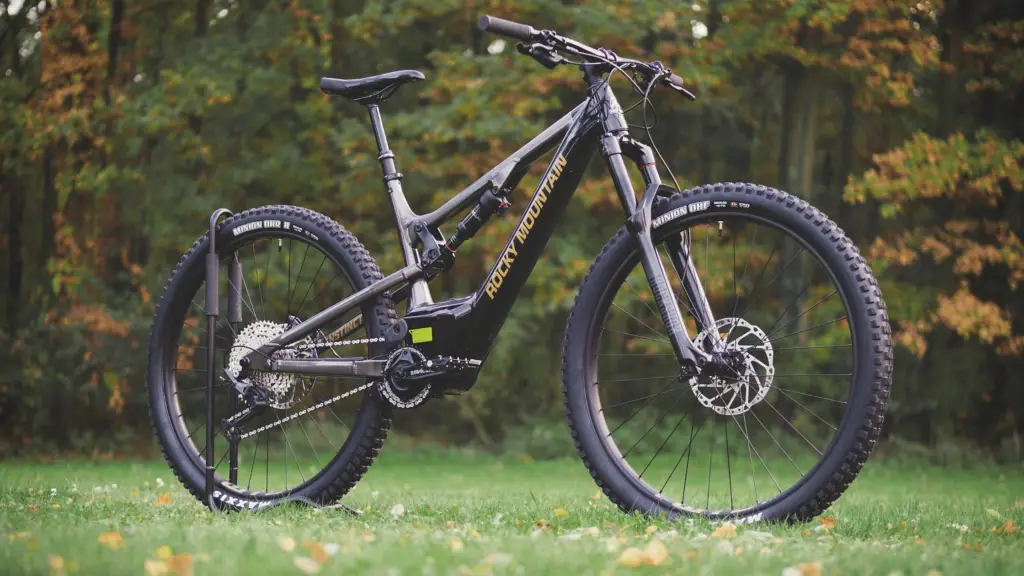
11. Advanced Riding Techniques
Once you’ve mastered the basics, you can challenge yourself with advanced riding techniques (Ride a Mountain Bike). Learn to tackle obstacles like logs, rocks, and drops. Practice bunny hops to clear small obstacles on the trail. Experiment with different riding positions and techniques to improve your efficiency and control. Push your limits gradually, always prioritizing safety and building on your skills.
12. Riding in Challenging Conditions
Mountain biking can sometimes involve riding in challenging weather conditions. Be prepared for rain, mud, or even snow. Adjust your riding style to maintain traction and control on slippery surfaces. Use wider tires with appropriate tread patterns for improved grip. Dress in layers to adapt to changing temperatures and always carry essential supplies, such as a spare tube, pump, and multi-tool.
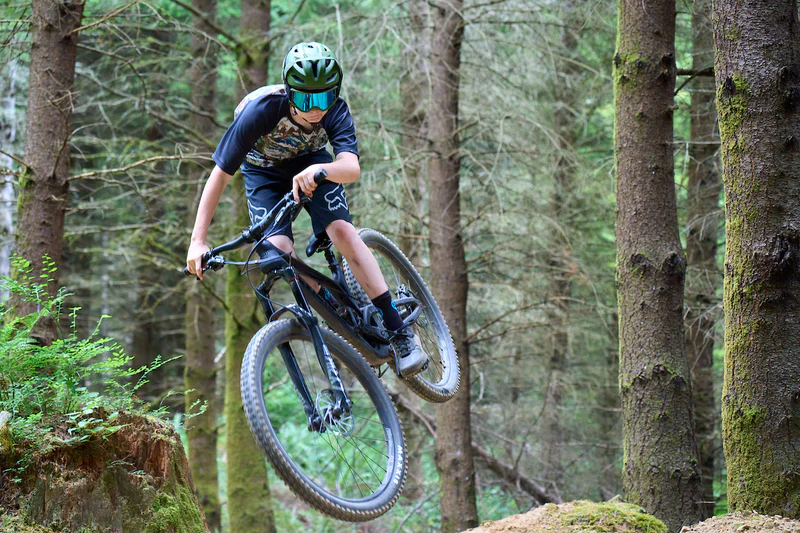
13. Pushing Your Limits
As you gain more experience and confidence, you may want to push your limits and explore more demanding trails. Gradually increase the difficulty level, taking on steeper descents, technical features, or longer rides. Pushing your limits should be a progressive process, focusing on skill development and maintaining a growth mindset. Always listen to your body and ride within your capabilities.
What to wear mountain biking: everything you need to know
when it comes to mountain biking, wearing the right gear is crucial for both your safety and comfort on the trails. Here’s everything you need to know about mountain biking gear:
1. Helmet: A properly fitting helmet is the most important piece of gear for mountain biking. Choose a helmet designed specifically for off-road riding, with adequate ventilation and adjustable straps. Ensure it sits level on your head and covers your forehead, providing protection in case of falls or collisions.
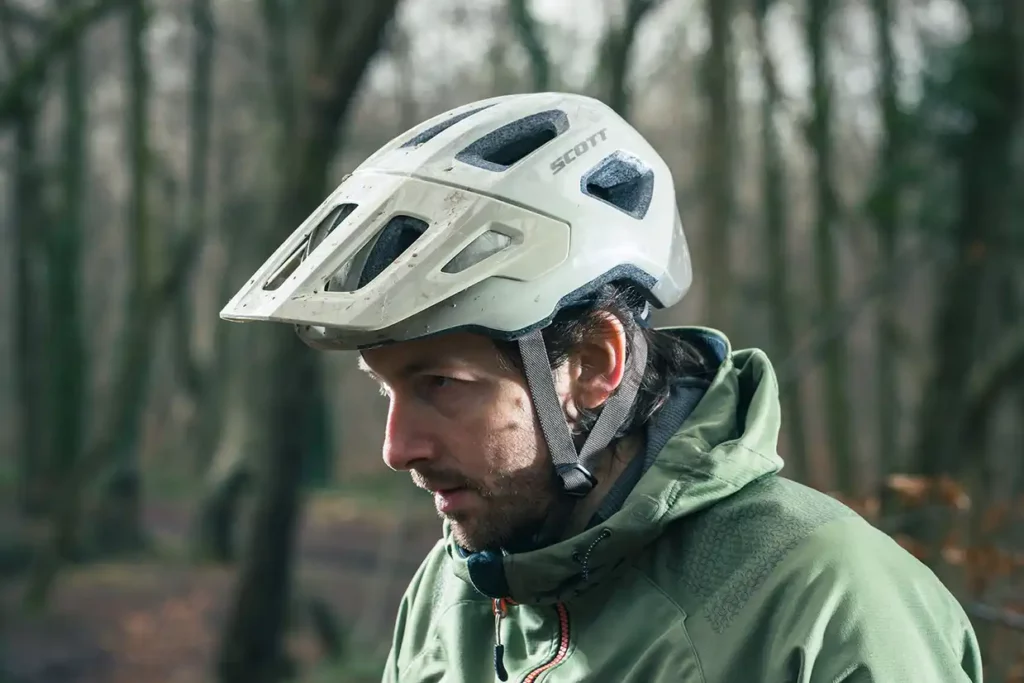
2. Gloves: Mountain bike gloves offer several benefits. They improve grip on the handlebars, reduce vibrations, and protect your hands in case of crashes. Look for gloves with padded palms and breathable materials to enhance comfort during long rides.
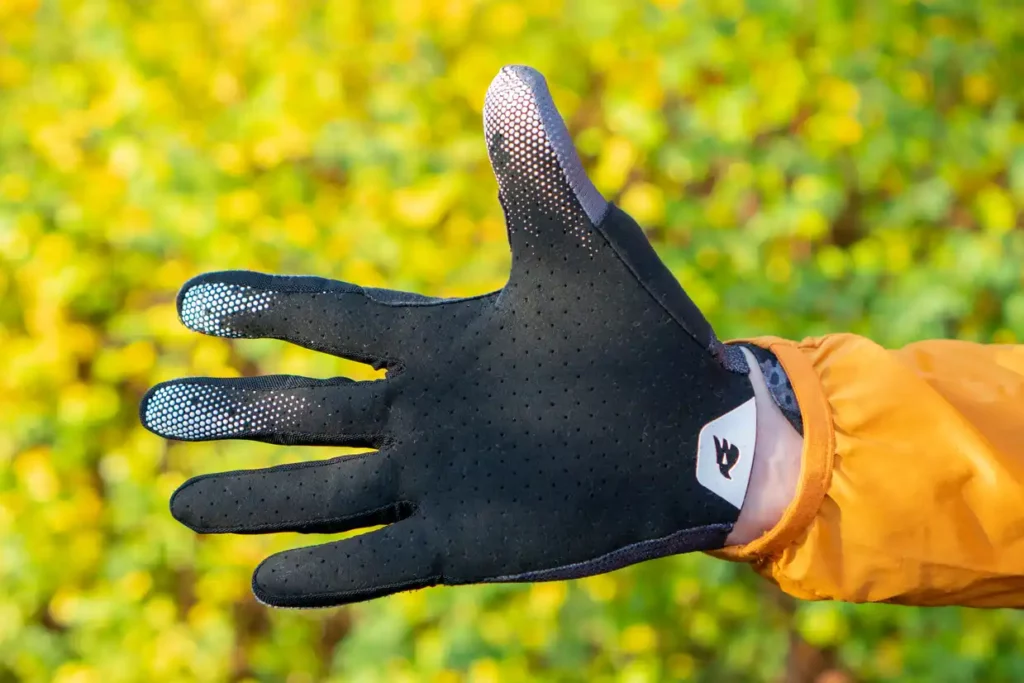
3. Clothing: Opt for moisture-wicking and breathable clothing to keep you comfortable on the trails. Consider wearing a moisture-wicking base layer, a durable jersey, and padded shorts with a chamois for extra cushioning and to reduce friction. Choose shorts that allow for freedom of movement and knee pads for added protection.
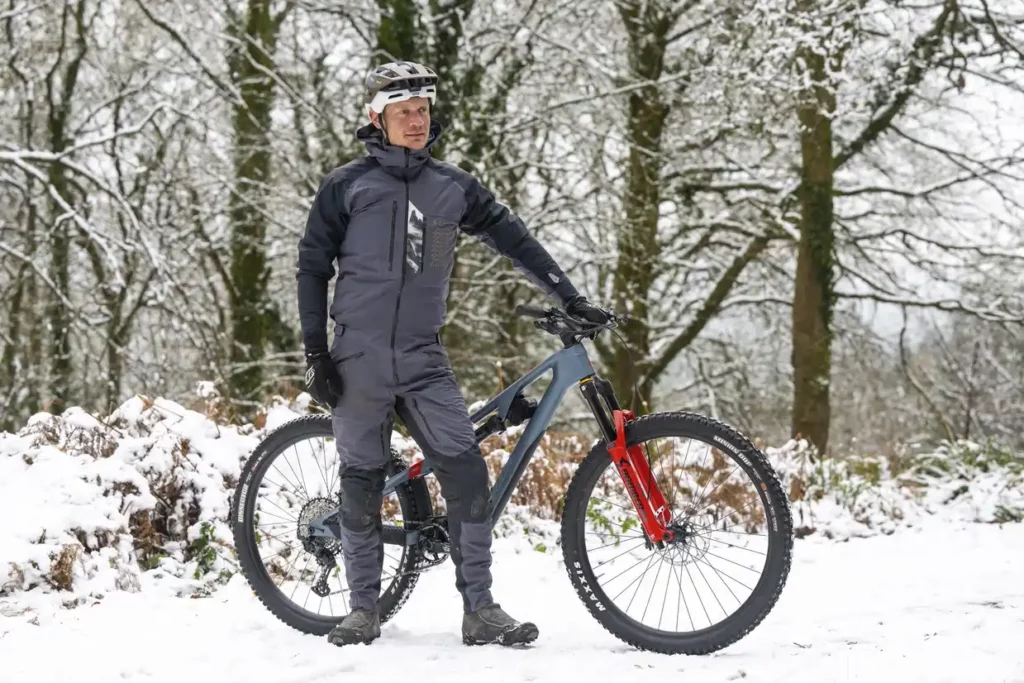
4. Shoes: Mountain biking shoes provide a secure connection between your feet and the pedals. Look for shoes with stiff soles for efficient power transfer and tread patterns that offer good grip when walking on uneven terrain. Clipless shoes allow you to attach your feet to the pedals, providing better control and efficiency.
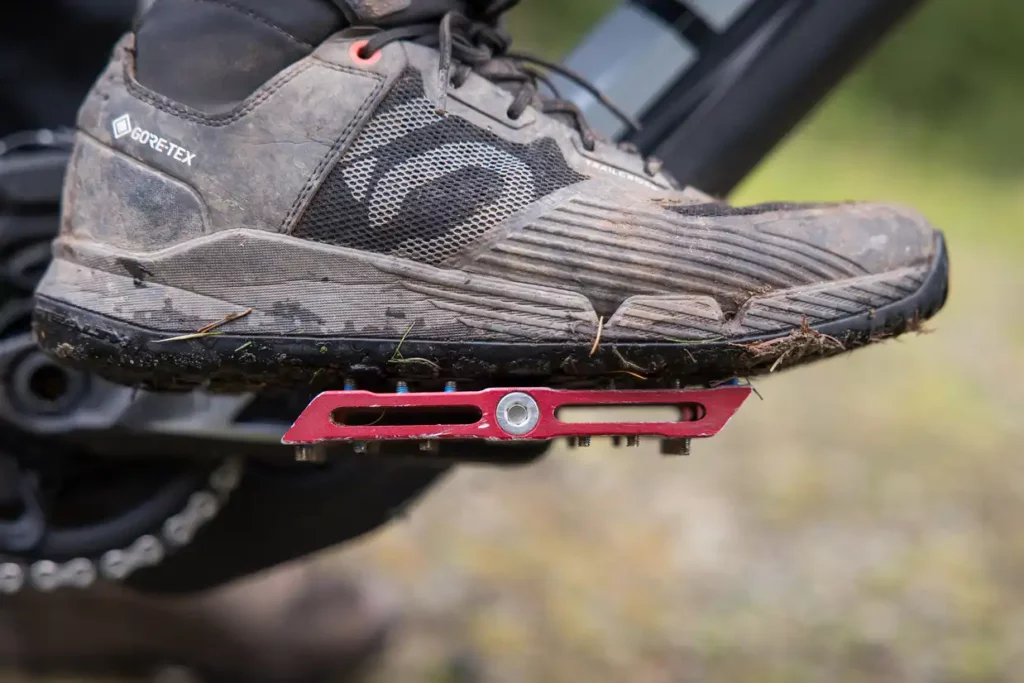
5. Eye Protection: Protect your eyes from debris, branches, and insects by wearing mountain bike-specific sunglasses or goggles. Look for lenses with UV protection and consider using interchangeable lenses for different lighting conditions. Goggles provide added protection and can be beneficial in dusty or muddy environments.

6. Body Armor: For more aggressive riding or when tackling technical trails, you may consider wearing additional body armor. This includes knee pads, elbow pads, and a chest or back protector. Body armor provides extra protection against impacts and abrasions.
7. Hydration System: Staying hydrated is essential during mountain biking. Consider using a hydration pack or a water bottle mounted on your bike for easy access to fluids. Hydration packs often come with additional storage compartments for carrying tools, snacks, and other essentials.

8. Tools and Repair Kit: Carry a small tool kit and a spare tube or tubeless repair kit. This will allow you to make basic repairs or adjustments on the trail, ensuring you can continue your ride even in the event of mechanical issues.
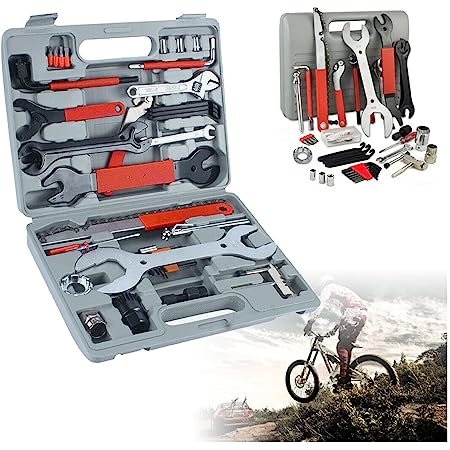
9. Bike Lights: If you plan to ride during low-light conditions or at night, having bike lights is crucial for visibility. Invest in a high-quality front light to illuminate the trail ahead and a rear light to make yourself visible to other trail users and vehicles.
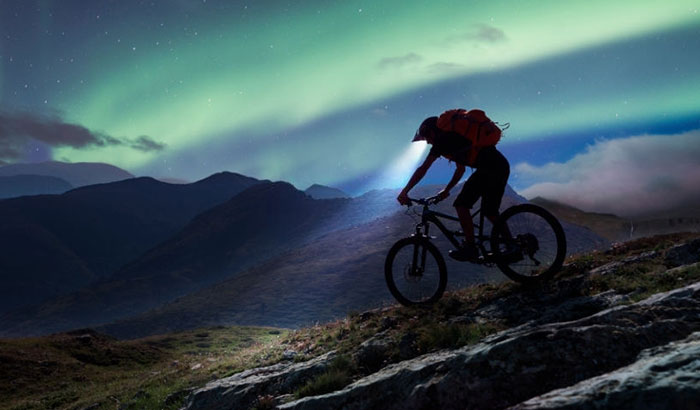
10. First Aid Kit: It’s always a good idea to carry a basic first aid kit, including adhesive bandages, antiseptic wipes, gauze, and adhesive tape. Be prepared for minor injuries that may occur during your ride.
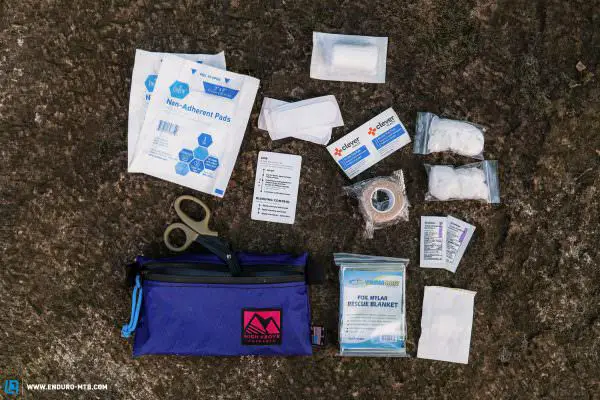
Remember, wearing the right gear not only enhances your safety but also improves your overall riding experience. Invest in quality gear that fits well and suits the type of mountain biking you plan to do. With the proper gear, you can confidently tackle any trail and enjoy the thrill of mountain biking (Ride a Mountain Bike).
FAQs
Q: Do I need any prior experience to ride a mountain bike?
A: While prior biking experience can be helpful, even beginners can learn and enjoy mountain biking. Start with basic trails and gradually progress as you gain confidence and skills.
Q: What kind of fitness level is required for mountain biking?
A: Mountain biking can be physically demanding, especially on challenging trails. It’s beneficial to have a reasonable level of cardiovascular fitness and strength. However, you can start at your own pace and gradually build your fitness as you progress in your mountain biking journey.
Q: Is mountain biking a dangerous sport?
A: Like any adventure sport, mountain biking comes with risks. However, by following proper safety measures, wearing protective gear, and riding within your skill level, you can significantly minimize the risks and enjoy a safe riding experience.
Q: How long does it take to become proficient in mountain biking?
A: The time it takes to become proficient in mountain biking varies from person to person. It depends on factors such as your dedication, practice frequency, and natural aptitude. With consistent practice and a willingness to learn, you can progress steadily and improve your skills over time.
Q: Can I ride a mountain bike on paved roads?
A: While mountain bikes are designed for off-road trails, you can ride them on paved roads as well. However, keep in mind that the knobby tires and suspension systems may not provide the same efficiency and comfort as road bikes.
Q: Can children ride mountain bikes?
A: Yes, children can ride mountain bikes, but it’s important to choose an appropriate bike size and difficulty level for their age and skill level. Supervision and proper safety precautions are essential when children are riding mountain bikes.
Conclusion
Congratulations! You’ve now learned the basics of how to ride a mountain bike. Remember, mountain biking is a journey of continuous learning and improvement. Practice regularly, seek new challenges, and explore different trails. Embrace the thrill and freedom that mountain biking offers while respecting nature and fellow trail users. So grab your bike, gear up, and embark on an adventure that will bring you closer to nature and provide endless excitement.













